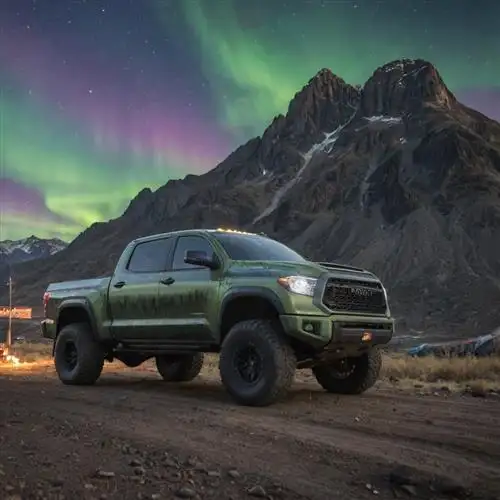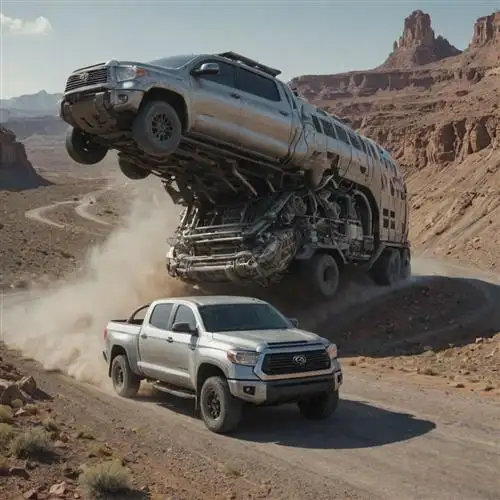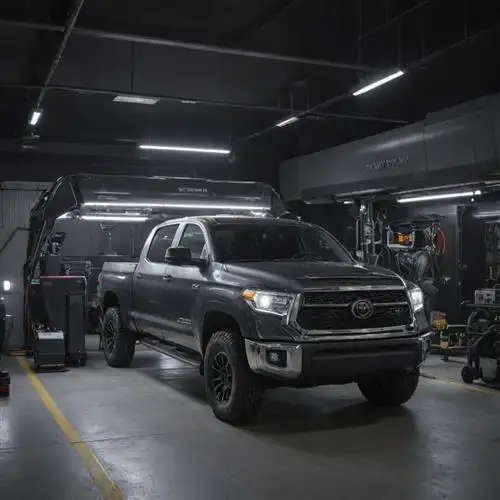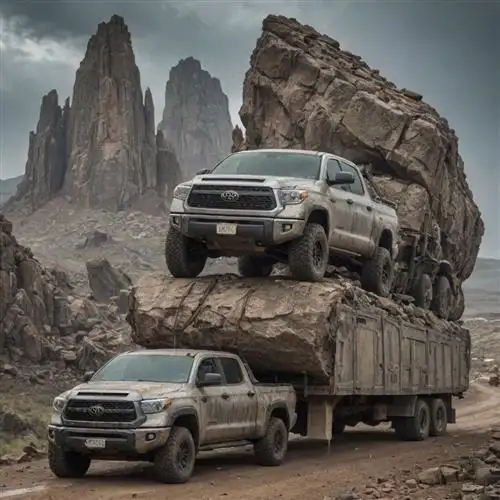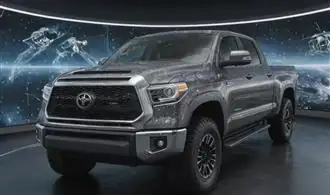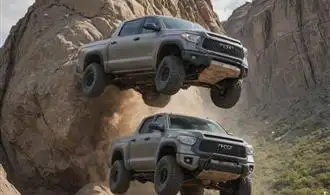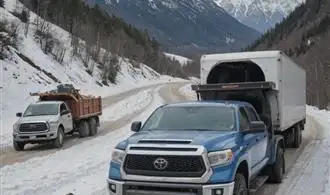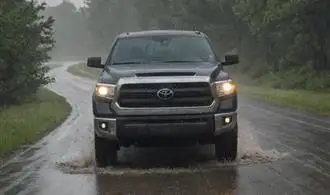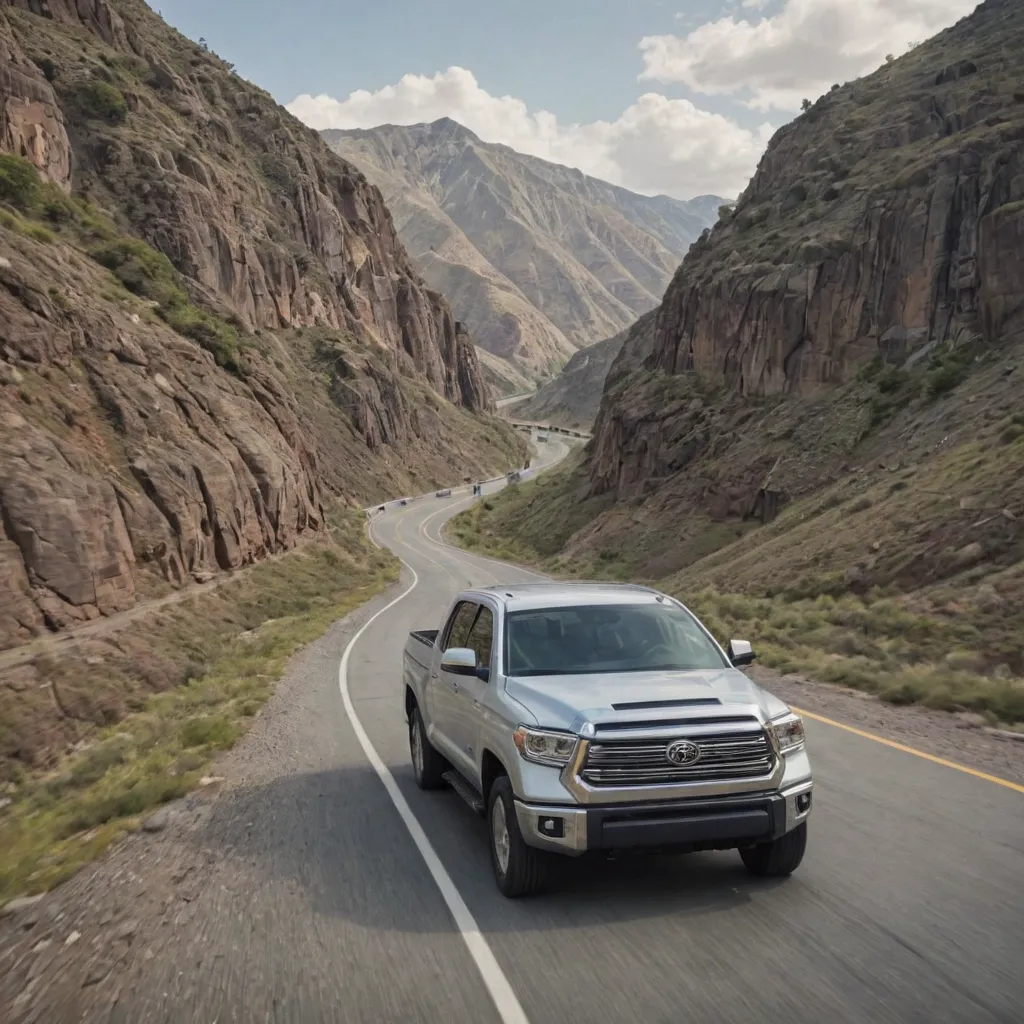
Towing Capacity Maximization
Maximizing the towing capacity of your Toyota Tundra is a crucial aspect of elevating your off-road and hauling experience. By understanding the factors that influence towing capacity and implementing strategic modifications, you can unlock the true power of your truck and tackle even the most demanding towing tasks with confidence. In this comprehensive guide, we'll delve into the intricacies of towing capacity, offering practical tips and insights to help you make the most of your Toyota Tundra's capabilities.
At the heart of towing capacity lies the truck's engine, transmission, and chassis. The Tundra's available V8 powertrains, coupled with robust suspension systems, provide a strong foundation for hauling heavy loads. However, maximizing towing capacity requires a holistic approach, considering factors such as payload, trailer weight, and overall vehicle weight distribution.
One key strategy for increasing towing capacity is to optimize your Tundra's payload. This involves carefully managing the weight of passengers, cargo, and any additional accessories or modifications. By keeping the overall weight within the truck's rated capacity, you can maximize the towing potential and ensure smooth, safe towing performance.
Another important consideration is the trailer's weight and its impact on the Tundra's towing capabilities. It's essential to choose a trailer that is within the truck's maximum towing capacity, as exceeding this limit can compromise handling, stability, and braking efficiency. Furthermore, properly distributing the trailer's weight, with a balanced load and an appropriate hitch setup, can make a significant difference in towing performance.
Upgrading your Tundra's towing accessories can also contribute to capacity maximization. High-quality towing hitches, trailer brakes, and suspension upgrades can enhance the truck's stability, control, and overall towing capabilities. Additionally, investing in advanced towing technologies, such as integrated trailer brake controllers and rear-view cameras, can provide added confidence and safety when navigating tight spaces or challenging terrain.
Beyond the physical modifications, understanding the nuances of towing techniques is equally crucial. Familiarizing yourself with proper towing practices, such as gradual acceleration, smooth braking, and maintaining appropriate following distances, can help you maximize the Tundra's towing potential while ensuring the safety of both you and other road users.
Trailer Stability and Control
Maintaining trailer stability and control is crucial when towing with a Toyota Tundra. One of the primary factors that contribute to trailer stability is the weight distribution between the truck and the trailer. Proper weight distribution ensures the trailer's center of gravity is positioned correctly, reducing the risk of sway and improving overall handling. It's recommended to distribute the trailer's weight so that approximately 60% of the total weight is on the front half of the trailer and 40% on the rear.
Another important aspect of trailer stability is the use of a weight-distributing hitch. This type of hitch utilizes spring bars that transfer some of the trailer's tongue weight to the tow vehicle's front axle, effectively reducing the amount of sag in the rear of the Tundra. This helps maintain the proper steering geometry and enhances the vehicle's stability, especially when navigating curves or dealing with crosswinds.
Trailer sway control is a crucial feature that can significantly improve the towing experience with a Toyota Tundra. There are several types of sway control systems available, ranging from basic friction-based devices to more advanced electronic systems. These systems work by applying subtle braking force to the trailer wheels or by adjusting the trailer's suspension to counteract any sway motion, providing a more stable and controlled towing experience.
In addition to the hardware, driver techniques also play a vital role in maintaining trailer stability. Maintaining a steady speed, avoiding sudden maneuvers, and being aware of road conditions and wind gusts can all contribute to a more stable and controlled towing experience. It's also important to monitor the trailer's behavior and be ready to make adjustments to the towing setup if necessary.
Towing Equipment Optimization
Ensuring your Toyota Tundra is equipped with the right towing gear is crucial for a seamless and safe towing experience. Begin by selecting the appropriate hitch. The Tundra's towing capacity varies by model, so consult your owner's manual to determine the maximum weight your truck can handle. Look for a hitch that meets or exceeds your Tundra's towing rating. Consider a weight-distributing hitch, which helps balance the load and improve handling.
Next, invest in a quality trailer brake controller. This device synchronizes the trailer's brakes with your Tundra's, providing safer and more controlled stops. Integrated controllers, like the ones offered by Toyota, offer a clean, integrated look and often provide additional features like digital readouts and customizable settings.
Proper wiring is also essential. Ensure your Tundra is equipped with a 7-pin or 4/7-pin trailer connector, which provides power for the trailer's lights and brakes. Upgrade to a heavy-duty wiring harness if necessary, and consider adding auxiliary lighting to enhance visibility.
When it comes to the trailer itself, choose a model that matches your Tundra's capabilities. Pay attention to the gross vehicle weight rating (GVWR) and the tongue weight, which should not exceed your truck's maximum towing and payload capacities. Equipping the trailer with features like electric brakes, independent suspension, and low-profile tires can further improve towing dynamics.
Terrain Adaptive Towing Techniques
Towing with your Toyota Tundra is a whole different ballgame when you factor in various terrain conditions. Whether you're pulling a heavy trailer through winding mountain roads or navigating through muddy fields, your Tundra's towing capabilities can be maximized with the right techniques. Let's dive into the essential tips that will elevate your towing experience and ensure your Tundra performs at its best, no matter the terrain.
One of the key aspects of terrain adaptive towing is understanding your Tundra's advanced towing technologies. Features like Trailer Sway Control and Integrated Trailer Brake Controller work seamlessly to keep your trailer stable and under control, even in challenging conditions. Familiarize yourself with these systems and learn how to utilize them to their full potential.
When it comes to towing on uneven or rugged terrain, adjusting your driving style is crucial. Maintain a lower gear to maximize torque and control, and be mindful of your speed. Slow and steady is the name of the game, as sudden acceleration or braking can destabilize your trailer. Additionally, pay close attention to your Tundra's transmission temperature and be prepared to shift to a lower gear if it starts to climb.
Another important consideration is weight distribution. Ensure your trailer's weight is properly balanced, with the majority of the load positioned over the axles. This will not only improve handling but also reduce the strain on your Tundra's suspension and brakes. Regularly check your trailer's hitch and ensure it's properly secured to your Tundra's towing package.
Navigating through soft or uneven terrain, such as sand, mud, or snow, requires a delicate touch. Adjust your Tundra's drivetrain settings to maximize traction, and consider using lower tire pressures to increase surface area and grip. Avoid sudden movements and be prepared to use your Tundra's 4WD or off-road capabilities to power through challenging sections.
Remember, safety should always be your top priority when towing. Equip your Tundra and trailer with the necessary safety lights, reflectors, and emergency equipment. Stay vigilant, maintain a safe following distance, and be prepared to react quickly to any changes in the terrain or road conditions.
Towing Safety and Precautions
Towing with your Toyota Tundra requires utmost care and attention to safety. Whether you're hauling a trailer, a boat, or any other heavy load, taking the right precautions can make all the difference in ensuring a successful and stress-free towing experience. Here are some essential tips to keep in mind:
Proper Trailer Hitching and Connection: Secure your trailer or load properly to the Tundra's towing hitch. Ensure the connection is tight, the safety chains are correctly crossed and attached, and the trailer's electrical connector is firmly plugged in. Regular inspection of these connections before and during your journey is crucial.
Weight Distribution and Balancing: Achieve the proper weight distribution by loading the trailer or cargo properly. Place heavier items closer to the trailer's axle and distribute the weight evenly. This will help maintain the Tundra's stability and handling, reducing the risk of sway or fishtailing.
Braking Considerations: Account for the additional weight and length when braking. Allow for longer stopping distances and apply the brakes gently to avoid jackknifing or loss of control. Consider upgrading your Tundra's braking system if you regularly tow heavy loads.
Towing Speed and Driving Dynamics: Adjust your driving speed to the conditions and the weight you're towing. Reduce speed when navigating turns, hills, or inclement weather. Be mindful of the Tundra's increased susceptibility to wind, rain, and other external forces when hauling a trailer or load.
Tire Inspection and Pressure: Regularly check the tires on both your Tundra and the trailer or load. Ensure they are properly inflated and in good condition. Underinflated or worn tires can increase the risk of blowouts, which can be extremely dangerous when towing.
Visibility and Signaling: Ensure your Tundra's towing lights, turn signals, and brake lights are functioning correctly. Use your mirrors and be aware of your vehicle's increased length and blind spots. Signal well in advance when changing lanes or turning to keep other drivers informed of your intentions.

